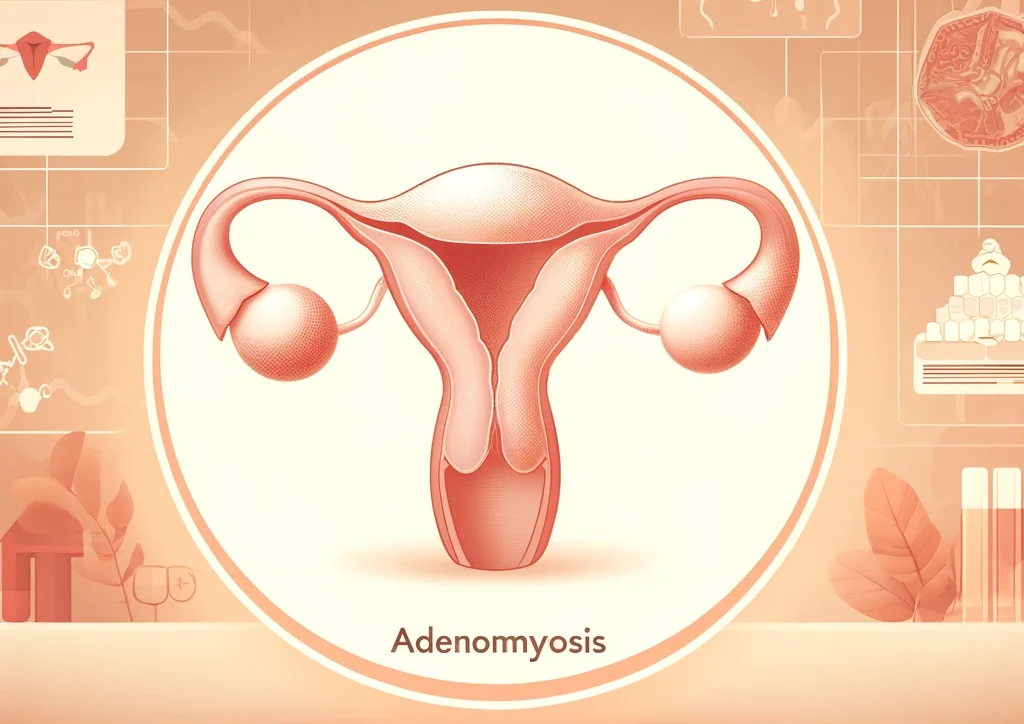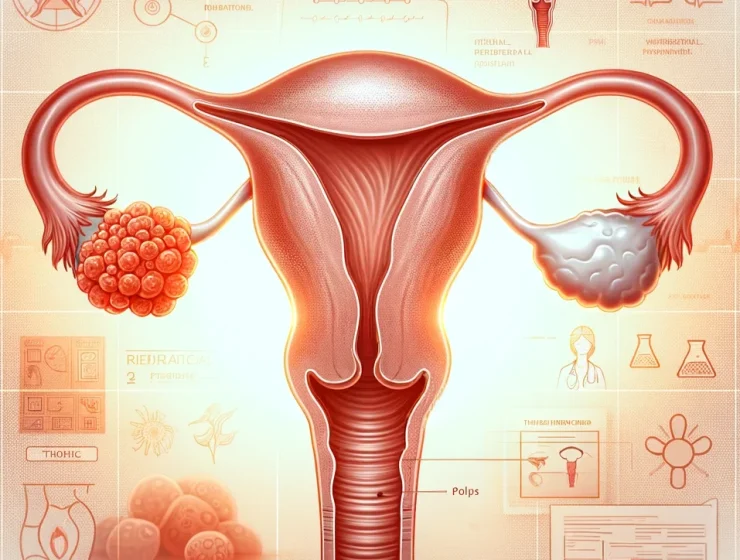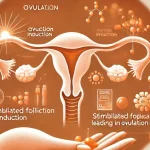What exactly is adenomyosis?
Adenomyosis is a condition in which the uterine lining (endometrium) grows into the muscular wall of the uterus. This can lead to heavy periods, severe menstrual pain and a swollen abdomen. Women who deal with this often experience a lot of discomfort. Adenomyosis is often confused with endometriosis, because both conditions involve the uterine lining. However, with adenomyosis the mucous membrane remains within the uterus, while with endometriosis it occurs outside the uterus.
-
- Symptoms: Heavy menstrual bleeding, menstrual cramps, chronic pelvic pain.
-
- Causes: Hormonal changes, operations on the uterus such as a cesarean section.
To diagnose adenomyosis, a doctor may perform an ultrasound or MRI. This helps assess the thickness of the uterine wall. Treatment options range from pain medications to hormonal therapies, depending on the severity of symptoms. In severe cases, surgery may be considered. It is important to be well informed and to discuss with your healthcare provider what the best approach is for your situation. This allows you to improve your quality of life and deal better with your complaints.
| Therapy | Effect |
|---|---|
| Pain medication | Reduction of pain |
| Hormonal therapies | Stabilization of hormonal fluctuations |
| Surgery | Removal of affected areas |
Howis adenomyosis diagnosed
Diagnosing adenomyosis can be a bit complicated, but through a combination of different diagnostic methods, we can make an accurate diagnosis. First of all, a ultrasound done. This method uses sound waves to create detailed images of the uterus. Although ultrasound is useful, it can sometimes be difficult to precisely distinguish adenomyosis from other uterine conditions. Therefore, an complementary is often used magnetic resonance imaging (MRI) executed.
In addition to imaging tests, your doctor may also use other tools and techniques, such as:
-
- Gynecological examination: During this examination, the doctor feels for abnormal enlargements or lumps in the uterus.
-
- Endometrial biopsy: A small piece of the uterine lining is removed and examined. Although this does not specifically demonstrate adenomyosis, it helps rule out other conditions.
-
- Blood test: Sometimes blood tests are performed to rule out other causes of heavy periods and pain.
Using these different methods, we at Midwives Lelystad can make an effective diagnosis and then draw up a treatment plan to relieve your symptoms.
Symptoms of adenomyosis that you should not ignore
With adenomyosis, the symptoms can be particularly annoying and disrupt your daily life. A few important symptoms things you definitely shouldn't ignore are:
-
- Heavy periods: Experiencing unusually heavy and prolonged periods is a clear signal.
-
- Severe menstrual pain: Painful cramps that are much more intense than usual during menstruation.
-
- Pelvic pain: A constant pain in the pelvic area, even outside the menstrual period.
In addition, these symptoms may be accompanied by other complaints such as chronic fatigue and discomfort during to make love. Although these symptoms can vary greatly from person to person, it is essential to pay attention to your body and consult a professional in time. At Verloskundigen Lelystad we are here to support and advise you.
Lifestyle adjustments to relieve pain
Adjusting your lifestyle can go a long way toward relievingthe pain associated with adenomyosis. Regular exercise plays a crucial role in this. For example, by walking, swimming or undertaking other moderate physical activities, you can improve blood circulation and reduce muscle tension. In addition helps yoga to relax both your body and your mind, which can lead to a significant reduction in complaints.
Nutrition is also an important aspect to consider. Try incorporating anti-inflammatory foods into your diet such as:
- Oily fish such as salmon and mackerel
- Green leafy vegetables such as spinach and kale
- Nuts and seeds for a boost of essential fatty acids
Furthermore, avoid highly processed foods and sugar, as these can worsen inflammation. Finally, it can be helpful to keep a diary of which activities and foods relieve or worsen your pain. By looking at this you can better understand what works for your body.
Treatment options and their pros and cons
Hormonal Therapies: Hormones can be an effective way to manage the symptoms of adenomyosis. The birth control pill, hormonal IUDs (such as Mirena) and GnRH agonists are some possibilities. However, these treatments have both advantages and disadvantages.
-
- Advantages: Reduction of pain and heavy periods, regulation of the menstrual cycle.
-
- Cons: Possible side effects such as weight gain, headaches and mood swings.
Surgical options: When hormonal treatments do not work sufficiently, surgery is sometimes the next step. There are several surgical procedures that can be considered, such as endometrial ablation and hysterectomy.
-
- Advantages: Long-term relief of symptoms, often definitive solution with hysterectomy.
-
- Cons: Invasive, long recovery time, possible complications and loss of fertility during hysterectomy.
| Treatment option | Advantages | Cons |
|---|---|---|
| Hormonal therapies | Regulation of cycle | Weight gain |
| Surgical options | Long lasting relief | Invasive |
Resume
In conclusion, at Midwives Lelystad we understand that living with adenomyosis can be a challenge. It's important to know that there are different ways to manage symptoms and that you are not alone. Talk openly with your healthcare providers, seek support from peers, and stay informed about the latest treatment options.
Do you have questions or would you like to know more about how to deal with Adenomyosis? Our experienced midwives are always ready to help you. Your health and well-being are our top priority, and together we work on a solution that suits you.
Continue to take good care of yourself and don't hesitate to seek help when you need it. Thanks for reading and if you want to know more, you know where to find us!







